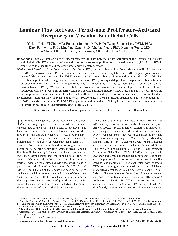摘要
Background-Steady laminar flow is atheroprotective, in part because of its antiinflammatory effects on vascular endothelial cells (ECs). We studied the activation of peroxisome proliferator-activated receptor-gamma (PPARgamma) in ECs in response to laminar flow and the associated antiinflammatory effect.
Methods and Results-Using flow channel with cultured ECs, we found that laminar flow activated the PPARgamma-mediated PPAR-responsive element (PPRE) activity and increased the mRNA encoding CD36, a PPARgamma-targeted gene. Analysis of the CD36 promoter revealed that PPRE was required for flow activation. Laminar flow induced the GAL-PPARgamma-LBD fusion protein, which suggests that flow activation of PPARgamma was ligand dependent. The pharmaceutical inhibitors of phospholipase A2 (PLA2) and cytochrome P450 epoxygenases (CYP450s) were able to block the laminar flow-activated PPARgamma. We also showed that lipid extracts from flow media contained ligands for the activation of PPARgamma in other cell types. This paracrine activation exerted antiinflammatory effects in ECs and THP-1 cells, including the suppression of cytokine-induced nuclear factor-kappaB activation and expression of intercellular adhesion molecule-1.
Conclusions-Laminar flow activates endogenous PPARgamma in ECs, which is ligand dependent. The flow production of PPARgamma ligands is through the PLA2-CYP450 pathway, and the induced PPAR gamma ligands exert antiinflammatory effects in several types of cells.
- 出版日期2004-8-31
